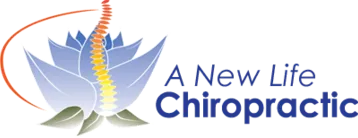 Evaluation and treatment of neck pain begins with a detailed description of your problem. We call this a medical history. This is when we take the time to listen to you. It is important that we gather some basic information. Put simply: When did your problem start? How did it start? What makes it worse? What makes it better? Is your pain confined to your neck or does it go down your arm, into your hand and fingers, into your back, or into the front of your body? Have you had the problem before? Have you had any treatment before? If yes, did it help?
Evaluation and treatment of neck pain begins with a detailed description of your problem. We call this a medical history. This is when we take the time to listen to you. It is important that we gather some basic information. Put simply: When did your problem start? How did it start? What makes it worse? What makes it better? Is your pain confined to your neck or does it go down your arm, into your hand and fingers, into your back, or into the front of your body? Have you had the problem before? Have you had any treatment before? If yes, did it help?
This information tells us how to proceed. If there is any indication that your neck pain is due to a medical condition such as circulation problems, disease, or infection, then we will arrange for an appropriate medical evaluation. If your pain is clearly musculoskeletal, that is to say, mechanical in nature, then we carefully evaluate for the various causes of neck pain. There are many. They include: conditions such as chronic positional stress, such as sitting at a desk for long periods, congenital conditions that you are born with; injured muscles, called strains of the neck; stretched ligaments, called sprains of the neck, spinal contusions such as after a sports injury, work injury, fall, or auto injury; disc problems; degenerative changes such as degenerated discs and spinal arthritis; and pain from the joints of the neck which we refer to as facet syndrome.
The specific cause of your problem is determined by a careful, methodical examination, paying close attention to an array of orthopedic and neurologic tests. Basically this means that we use various positions and movements to ask your body questions, and the answers tell a story which leads to an understanding of your problem, which we call a diagnosis. The goal is to develop as high a level of understanding of your condition as possible. X-rays can be a helpful tool when appropriate.
NECK PAIN TREATMENT
- Advice on how you perform activities
- Instruction in specific stretches and exercises, or changes to your exercise routines
- Spinal manipulation, also known as a spinal adjustment
- Spinal decompression, also known as Cox flexion-distraction manipulation
- Electrical stimulation
- Ultrasound
- Acupuncture
Goals of treatment vary with the individual, but, in general, we want to see noticeable improvement in one week, and significant improvement in two.





